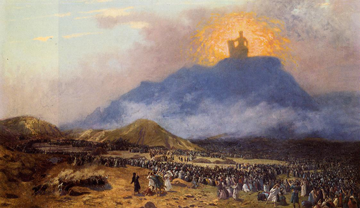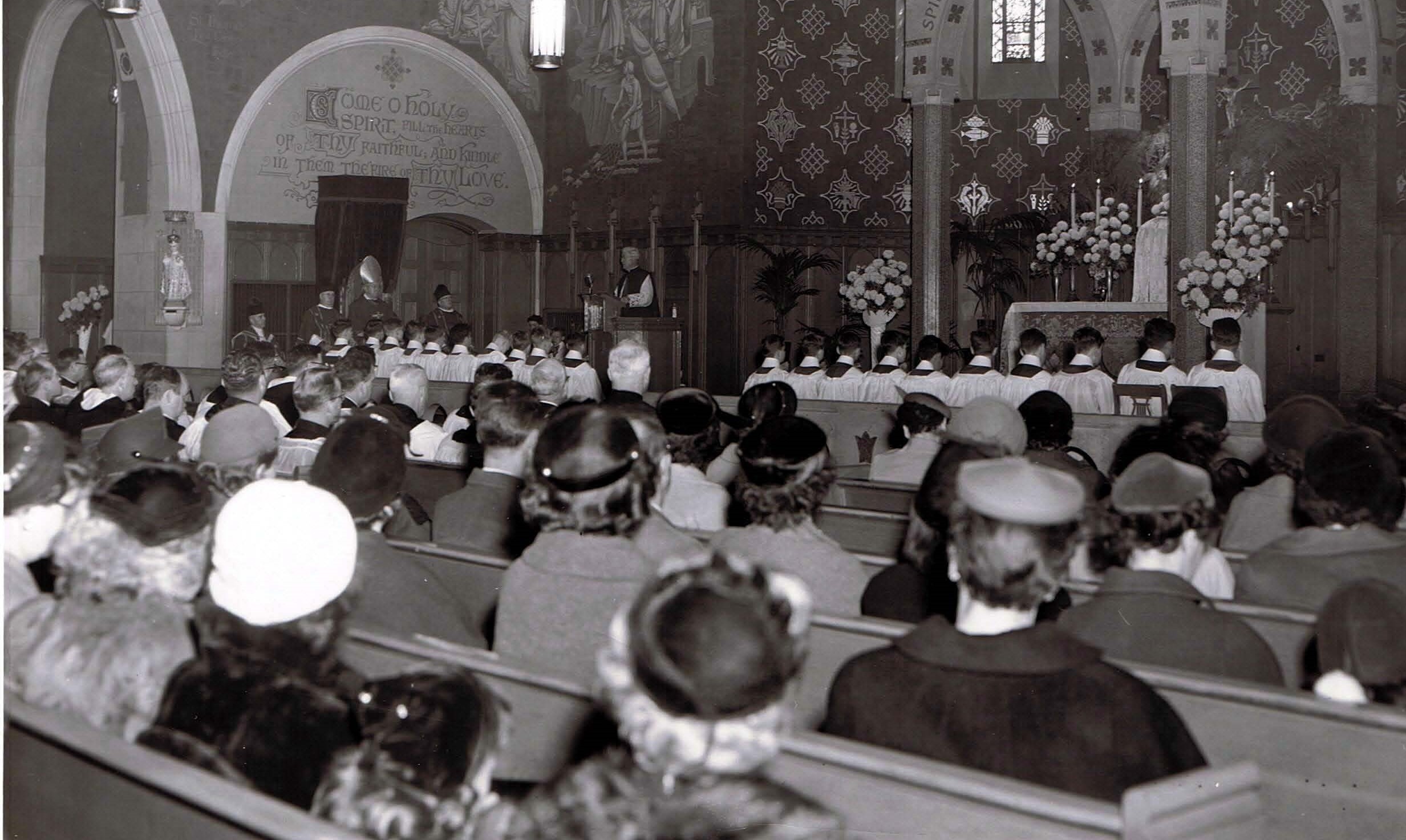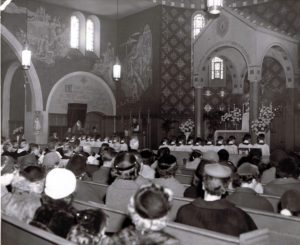The readings at daily Mass this week are from Exodus and say that Moses wore a veil to cover the afterglow of God radiating from his face.
In most traditional Catholic settings, we think of the veil as something a woman wears as a sign of traditional modesty. In this sense most of us consider it something good and positive.
In Exodus, however, the veil is presented in far more ambivalent terms:
As Moses came down from Mount Sinai with the two tablets of the commandments in his hands, he did not know that the skin of his face had become radiant while he conversed with the LORD. … the children of Israel … were afraid to come near him. … he put a veil over his face. Whenever Moses entered the presence of the LORD to converse with him, he removed the veil until he came out again. On coming out, he would tell the children of Israel all that had been commanded. Then the children of Israel would see that the skin of Moses’ face was radiant; so he would again put the veil over his face until he went in to converse with the LORD (Exodus 34).
The mere afterglow of God’s glory was something that the people of old could not tolerate, so Moses wore a veil that covered his face to shield them from it. Man, in his sinful state, is incapable of withstanding even the afterglow of God’s holiness.
The humility that they demonstrated is in many ways admirable. Unlike many people today, the ancients knew that God was utterly holy, and they were not. Many and varied were the rituals they carried out that recalled God’s holiness and man’s sinfulness.
An often repeated (but disputed) tradition is that the High Priest who went into the Holy of Holies once a year on the feast of Yom Kippur entered with much incense lest he catch a glimpse of the Holy One and be struck dead on account of his sins. It is also said that he wore bells sewn into his garment so that when he prayed, bowing and moving as he did so, those outside the veil knew that he was still alive. It is further said that he had a rope tied around his ankle so that if he were to be struck dead, he could be dragged out without others having to enter the inner sanctum and risk their own death in order to retrieve the body!
Whether this is true or not, it is clear that the ancient Jews understood that it was an awesome thing to be in the presence of the living and holy God, for who can look on the face of God and live? (cf Exodus 33:20)
How different this understanding is from that of us moderns, who manifest such a relaxed and comfortable posture in the presence of God in His holy Temple! Almost any sense of awe and holy fear has today been replaced by an extremely casual disposition, both in dress and in behavior. If the ancient Jewish practice was at one extreme, we are clearly at the other.
However, it would be a dubious position to hold that God expects Christians today the kind of fearsome reverence manifested in ancient Israel. Jesus came to grant us access to the Father through the forgiveness of our sins. Scripture says that as He died on the cross,
… Jesus cried out again with a loud voice and yielded up His spirit. And behold, the veil of the temple was torn in two from top to bottom; and the earth shook and the rocks were split (Matt 27:50-51).
Yes, the veil in the temple was torn in two from top to bottom. Extra-biblical traditions (e.g., Josephus) also hold that after the earthquake the large brass doors of the temple swung open and stayed that way.
Isaiah said, On this mountain he will destroy the veil that veils all peoples, the shroud that covers all nations (Is 25:7). This prophesy is fulfilled at the moment that Jesus dies on the cross on Mount Moriah (Golgotha) and the veil of the Temple is rent. On account of the cleansing blood of Jesus that reaches us in our baptism, we gain access again to the Father. Therefore, we have a perfect right (granted us by grace) to stand before the Father with hands uplifted to praise Him.
The veil is parted, torn asunder by Jesus. Thus, the veil that hid Moses’ face has a dual quality. While it does symbolize a great reverence, it also signifies a problem in need of resolution. We were made to know God, to be able to look on His face and live. Sin made us incapable of doing this, so the veil that Moses wore was one that ultimately needed to be taken away.
St. Paul speaks of us as looking on the face of the Lord with unveiled faces:
Setting forth the truth plainly, we commend ourselves to everyone’s conscience in the sight of God. And even if our gospel is veiled, it is only veiled to those who are perishing. The god of this age has blinded the minds of unbelievers, so that they cannot see the light of the gospel that displays the glory of Christ, who is the image of God. … For God, who said, “Let light shine out of darkness,” has made his light shine in our hearts to give us the light of the knowledge of God’s glory displayed in the face of Christ (2 Cor 4:2-6).
We are not like Moses, who would put a veil over his face to prevent the Israelites from seeing the end of what was passing away. But their minds were made dull, for to this day the same veil remains when the old covenant is read. It has not been removed, because only in Christ is it taken away. Even to this day when Moses is read, a veil covers their hearts. But whenever anyone turns to the Lord, the veil is taken away. … And we, who with unveiled faces contemplate the Lord’s glory, are being transformed into his image with ever-increasing glory, which comes from the Lord, who is the Spirit (2 Cor 3:13-18).
For some the veil remains; it is a veil that clouds their minds. It is not a veil of modesty or reverence; it is a veil of “unknowing,” which must be removed by the gift of faith.
In the Exodus account we have a kind of “veil in reverse.” As noted above, most of us think of the veil as something beautiful and reverent—and it is—but the veil of Moses spoke of the sins and sorrows of the people; it was a veil that needed to be removed.
That said, I think that we moderns must find our way back to a greater degree of reverence and awe before the presence of God. Even in the New Testament and after Jesus’ resurrection, there are stories of both St. John and St. Paul encountering the glory of the Lord Jesus manifested from Heaven. So awesome was this theophany that both of them were struck down. Paul, as yet unbaptized, was also blinded. John, though not blinded, fell to his face.
The removal of the veil of Moses is both necessary and prophesied. Cringing fear must give way to hopeful confidence and joy in the presence of the Lord. Especially in these proud times, when self-esteem is an inordinate focus, we must come to realize that we are in the presence of the Holy One of Israel.
As the ancient hymn from the Liturgy of St. James says, All mortal flesh must keep silence, and with fear and trembling stand, pondering nothing earthly minded, for with blessing in His, Christ our God to Earth descendeth, our full homage to demand.
The veil of Moses is removed, but the “veil” of reverence, whether physical or metaphorical, must remain.




